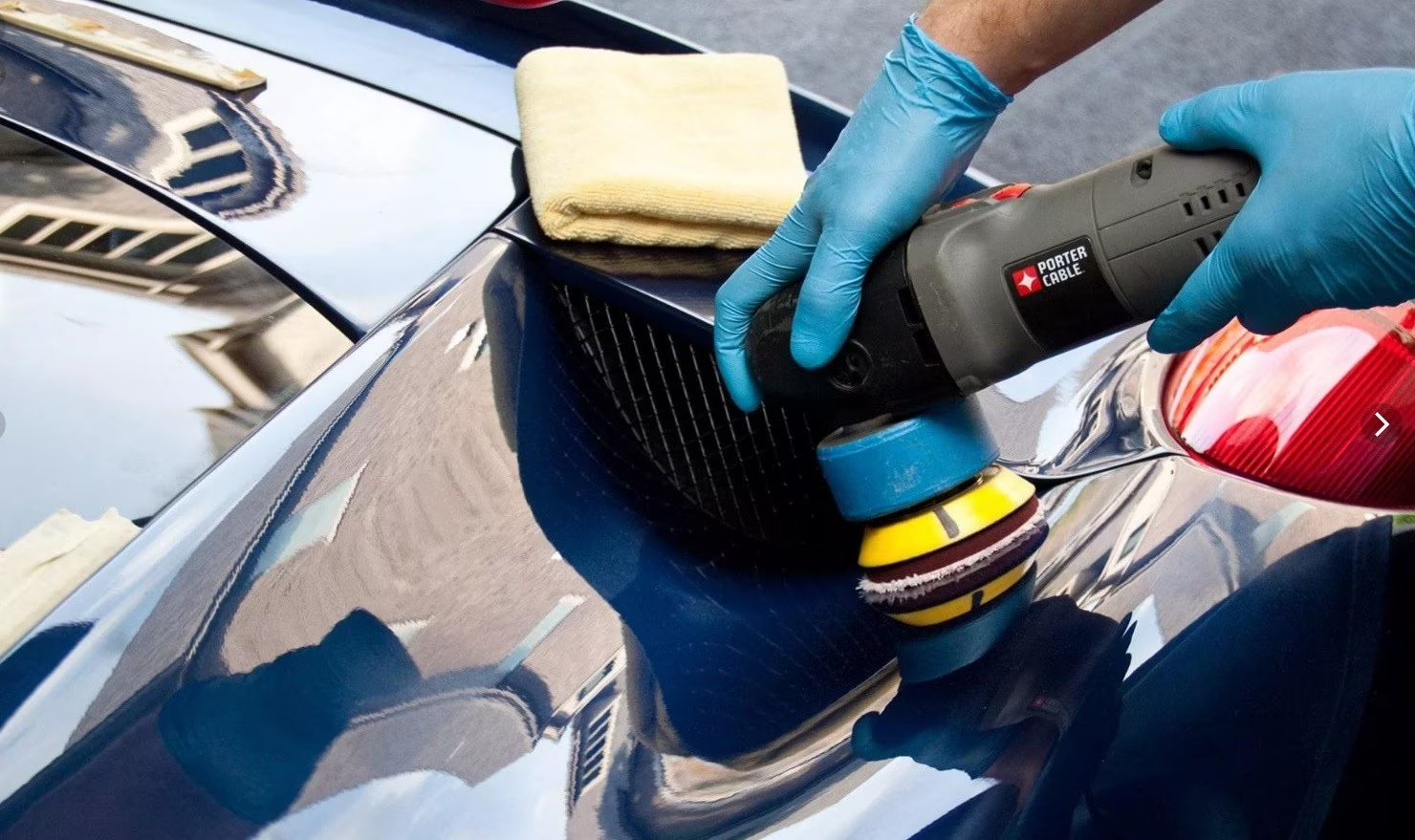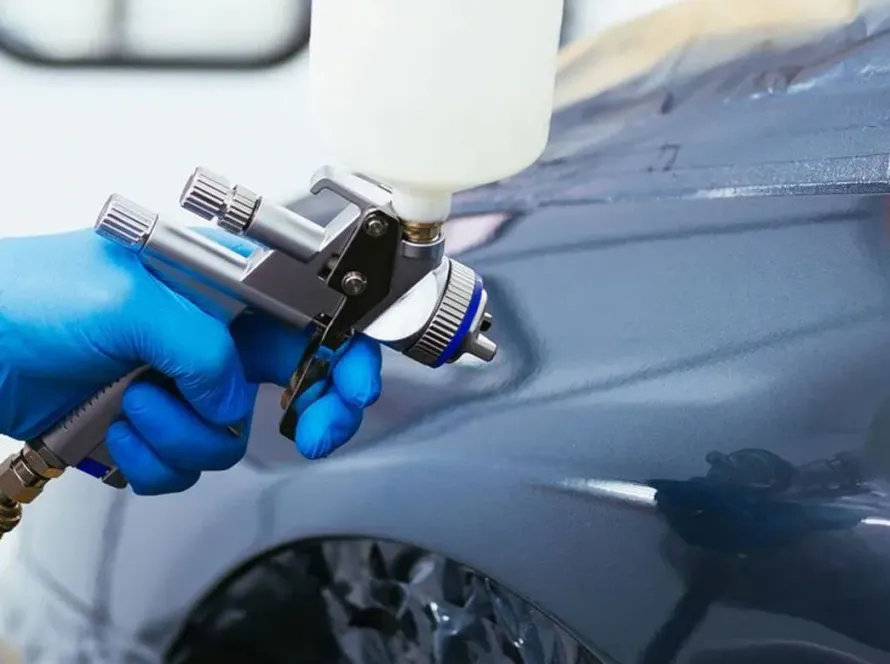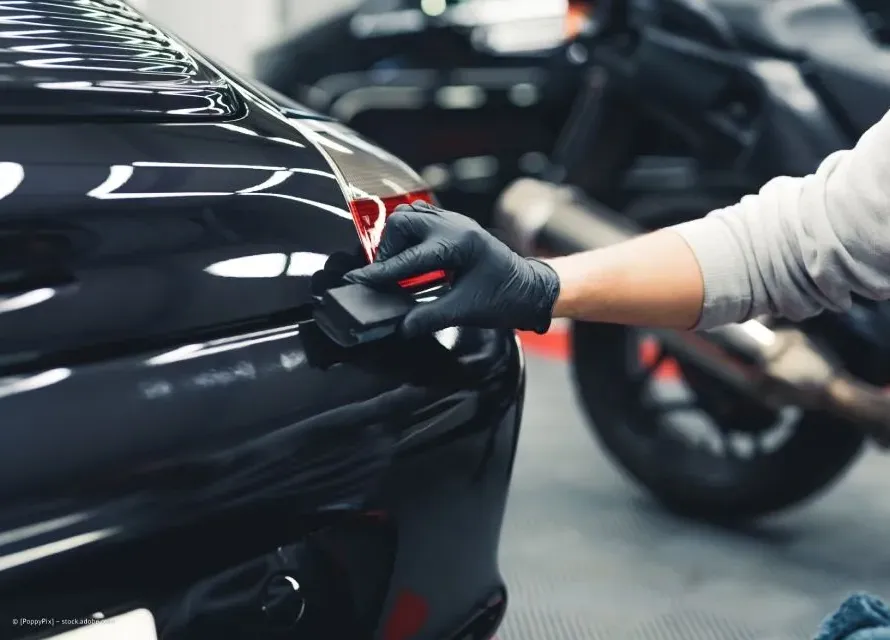Holograms and Micro-Marring: The Hidden Defects in Paint
Sometimes, after a car has been polished, you might notice strange streaks or cloudy patterns across the paint under direct light. These are known as holograms or micro-marring. While they aren’t as obvious as deep scratches, they can ruin the overall look of a car’s finish.
According to detailing specialists, improper machine polishing is one of the leading causes of holograms, especially when using rotary buffers without proper technique. Micro-marring, on the other hand, often results from aggressive polishing pads or contaminated applicators.
What Are Holograms?
Holograms are machine-induced paint defects that appear as wavy or cloudy streaks when light reflects off the paint. They’re usually caused by rotary polishers used incorrectly or with the wrong pad/compound combination.
- Visible under bright sunlight or halogen/LED inspection lights.
- Give paint a streaked, “holographic” look.
- Often left behind after rushed or inexperienced polishing.
What Is Micro-Marring?
Micro-marring is a form of very fine scratching, typically caused during compounding or polishing. Unlike holograms, micro-marring looks like faint haze or spiderwebbing across the surface.
- Caused by aggressive pads or dirty applicators.
- Can also happen when polish isn’t fully broken down.
- Reduces clarity and depth of paint.
How to Fix Holograms and Micro-Marring
- Paint Correction: Multi-stage polishing removes these defects safely by refining the clear coat.
- Dual-Action Polishers: Using DA polishers instead of rotary buffers reduces the risk of holograms.
- Proper Pad & Compound Matching: Choosing the right combination ensures a smooth finish without micro-marring.
- Final Refining Polish: A finishing polish restores clarity and gloss after compounding.
How to Prevent These Defects
- Use clean, high-quality pads and towels to avoid introducing scratches.
- Work in small sections and break down polishes completely.
- Inspect under strong LED or halogen lights to spot hidden defects.
- Finish with softer pads and less aggressive compounds.
Why They Matter
Even if a car has been “detailed,” holograms and micro-marring show up under proper lighting, revealing poor workmanship. Professional paint correction eliminates these hidden defects, leaving a flawless, mirror-like finish.
Frequently Asked Questions (FAQ)
What are holograms in car paint?
Holograms are streak-like patterns left behind by improper machine polishing, visible under bright light.
What causes holograms after polishing?
They’re caused by rotary buffers used incorrectly, dirty pads, or mismatched compounds.
What is micro-marring in detailing?
Micro-marring is ultra-fine scratching or hazing caused by aggressive pads, dirty applicators, or poor polishing technique.
Are holograms and micro-marring the same thing?
Not exactly. Holograms look like streaks, while micro-marring appears as haze or faint spiderwebs.
How do I remove holograms from paint?
Professional paint correction with multi-stage polishing safely removes holograms.
Can micro-marring be fixed?
Yes. Refining with softer pads and finishing polish restores clarity.
Do holograms mean bad detailing?
Yes. Holograms often indicate rushed or inexperienced polishing.
How do I prevent micro-marring?
Use clean pads, proper compounds, and avoid over-aggressive polishing.
Can ceramic coating hide holograms or micro-marring?
No. Coatings lock in defects. Correction must be done first.
How do professionals check for holograms?
They use bright LED or halogen inspection lights to reveal hidden defects.




